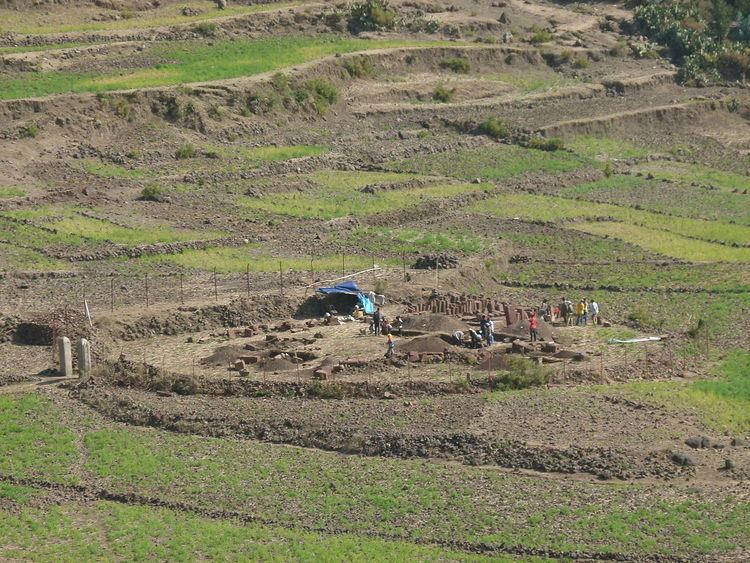 | ||
Mifsas Bahri 12°34′37″N 39°28′49″E is an archaeological site in the Tigray region of Ethiopia.
This highland site contains the ruin of a substantial building constructed of bright red dressed ashlar which may date as early as the Aksumite period, more likely its late phase. Lying 200 m west of the shore of Lake Hashinge, the site came to the attention of antiquities authorities in 1997 as a result of alleged exploitation of its building stone on the part of the local population (Tekle Hagos 2001). In 2013 a group led by Paul A. Yule from Mekelle University and Heidelberg University began to investigate the site (Yule-Wenig 2013). Curiously, the site lies 100 km south of the next site attributeable to the Aksumite cultural assemblage (Wuqro), thus far south of the main site distribution. The building at Mifsas Bahri is a church, to judge from the orientation, masonry excellence and architectural relief sculpture. Preliminarily, the building appears to have undergone three phases including a squatter occupation.
Historical reconstruction and local tradition had it that it was destroyed in the 1540s by the mixed forces of Aḥmad ibn Ibrahīm al-Ġazī. This contradicts a few recent unpublished radiocarbon dates, which suggest a building and construction considerably earlier. Excavation confirmed the presence of a monumental stone building some 20 m x 35 m in surface area. According to local sources the church was named Gebre Menfes Kidus.
